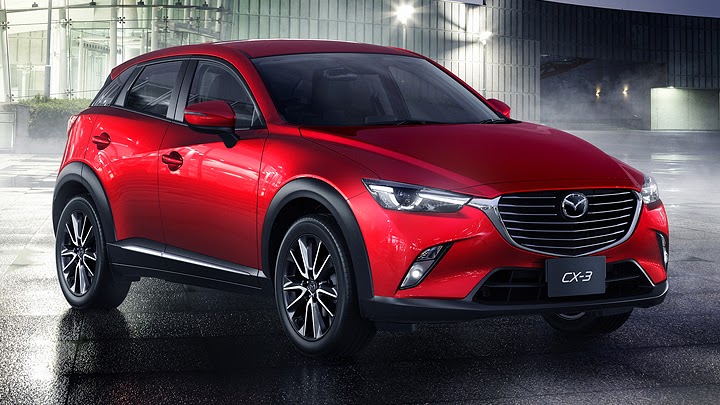
Mazda’s first attempt in this world was called CX-7, and arrived in 2006. It was a great car in several aspects, but being placed between compact and midsize categories made it fail at both. Since the bigger brother CX-9 seemed to have had a better start, since 2007, the company understood that it would take two models to prosper. The gorgeous CX-5 succeeded the pioneer in 2012, with several features that made it a better, yet smaller product. After that, the Japanese decided it would be interesting to invest in the supermini branch, which already includes members such as Ford EcoSport, Opel Mokka and Nissan Juke. The only problem would be creating enough differentiation to make it competitive, but… The answer, once again, is Jinba Ittai.
“Person and horse as one body”, for those who prefer English, is a Japanese expression that describes the unity of horse and rider at Yabusame, a traditional type of mounted archery. Mazda took it to its iconic roadster by creating an unique driving experience, with all the components working together in order to deliver a very natural response to the driver’s intentions. In a compact crossover, this should mean it’ll be fun to drive. CX-3 certainly won’t make tight turns as well as a Miata, but items such as brakes, engine, steering, suspension and transmission were tuned to allow a bigger amount of emotion. Mazda claims this car was designed to deliver great handling and linear engine response, rather than high numbers for acceleration and top speed.







Such philosophy gave another result which is quite interesting. Giving priority to the engine’s behavior, instead of its output, made Mazda put the downsizing concept aside. CX-3 will use a 1.5-liter with diesel and a 2.0-liter with petrol, but neither of them is turbocharged – nor had power or torque figures revealed yet. As usual, both follow the SkyActiv technology, which is focused on driving pleasure and fuel efficiency and also appears in a series of other components. The body, for example, “achieves high levels of performance in three seemingly contradictory areas: collision safety, weight reduction and rigidity”. The suspension uses lightweight components, the dampers’ friction was reduced, and the chassis received finer tuning.
Going to the cabin, it won’t be hard to notice that CX-3’s platform is shared with the 2 hatchback: the dashboard is almost identical, including the great-looking trio of circular air vents. Since most controls were taken to the floating 7” screen, the overall look is clean and seems very easy to use – you can operate it through a rotary knob, in order to keep the driver’s eyes on the road as much as possible. Mazda claims to have used high-quality materials, along with a driver-oriented design that makes CX-3’s cabin look as sporty as roomy and comfortable – this feeling is enhanced by red and chrome inserts. Another interesting feature is that the crossover’s center of gravity is claimed to be low, even though the driving position remained tall.







CX-3’s equipment list includes an entirely new all-wheel-drive system, several electronic safety alerts, and MZD Connect. The latter is Mazda’s “in-car connectivity system”, which operates Bluetooth connections, Internet access, SMS reading and Internet radio. Everything is fitted into a body which measures 4,275 mm of length, 1,765 mm of width, 1,550 mm of height and 2,570 mm of wheelbase – slightly smaller than a Nissan Juke. Changing from inside to outside, you can see the latest expression of the attractive Kodo design language. The front fascia takes the initial look to a very imponent upper grille, which is surrounded by a chrome bar which ends as part of the internal design of the headlights – these are a perfect combination of the 2’s and the 3’s units.
Going to the sides reveals a very dynamic style, which is interesting for using only one main crease, instead of two. While it highlights the engine compartment, in order to make the car look more powerful, the arched waistline helps to create that imponent look which draws so many people to crossovers. Painting the D-pillars in piano black gives the famous “floating roof” effect, while up-to-18” wheels finish the aggressive intention. The rear uses horizontal lights and a very low glass, this time to make the car look wider. At the same time, the black-plastic lower section is taller than usual, and holds two circular exhaust pipes. Mazda CX-3 will arrive in Japan in a couple of months, with other markets receiving it shortly after.